A Bittersweet Victory: Autistic Tennis Player Wins Exclusive Necker Cup
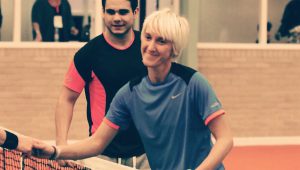 Becky Taylor, an autistic tennis player from the West Midlands, U.K., won the national Necker Cup tournament this past weekend. When you win a place at the Necker Cup, you automatically win a week-long trip to Richard Branson’s Necker Island, which is the site of the most exclusive Pro Am tournament in the world. What makes this so much more special is the fact that it was a mainstream tournament: The mental challenges that Becky faces every day made things 100 times harder as she battled for this well-deserved win.
Becky Taylor, an autistic tennis player from the West Midlands, U.K., won the national Necker Cup tournament this past weekend. When you win a place at the Necker Cup, you automatically win a week-long trip to Richard Branson’s Necker Island, which is the site of the most exclusive Pro Am tournament in the world. What makes this so much more special is the fact that it was a mainstream tournament: The mental challenges that Becky faces every day made things 100 times harder as she battled for this well-deserved win.
Becky has been playing tennis for six years, and this was her third year trying for the Cup. She had just missed out on the Finals in the previous two years, but this year she won the regional tournament that took her to the next step in London. Becky got through the qualifying stage on Saturday and joined 11 other players in the Finals on Sunday. Becky then went on to win the Necker Cup for best female tennis player. She and the male winner would join Richard Branson for the Pro Am tournament on Necker Island.
It’s been a thrilling time for Becky, and she especially appreciates the support given to her by organizers Virgin Active UK and Gary Stewart. However, she’s had to turn down the opportunity to accompany Branson and other tennis pros and legends because of her autism.
“It’s sad because it was the chance of a lifetime, but just going to London to play in the Finals for two days was really hard for me. Staying somewhere different with new people…” Becky explained to AutismAwareness.com. “I have ADHD too, and I think I won’t be able to cope with all of the traveling. So, it’s a bittersweet victory, in a way. I won the prize of a lifetime, but because of my autism, it is not practical for me to go.”
As sad and frustrating as this might be, Becky should be—and is—still proud of her wonderful accomplishment.
“I still won and that can’t be taken away from me.”
(This post was co-written with Becky Taylor.)

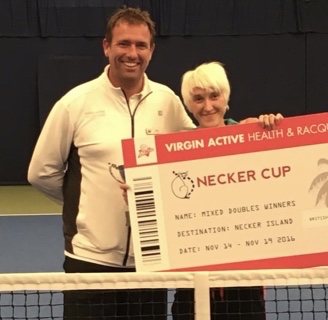

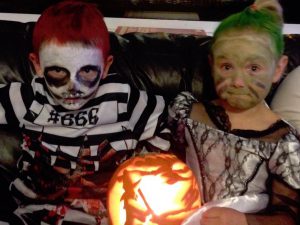 Let’s tackle Halloween in a fun way! I cannot even begin to count how many years Halloween has ended up like a real-life fright night in my house, as I try to get the kids ready for Halloween. I’d rather end up in a pumpkin smoothie than have to go through the rigamarole of taking my kids trick or treating. But it’s not as if we have a choice, is it? So get ready, we must!
Let’s tackle Halloween in a fun way! I cannot even begin to count how many years Halloween has ended up like a real-life fright night in my house, as I try to get the kids ready for Halloween. I’d rather end up in a pumpkin smoothie than have to go through the rigamarole of taking my kids trick or treating. But it’s not as if we have a choice, is it? So get ready, we must!
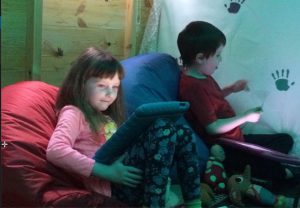 Most parents buy their children clothes, toys and other essential items, and use their garden space for barbecues, swings and kicking a ball about. However, I am an autism parent and that makes me think quite differently at times. Both of my children have significant sensory needs. My son has other complex medical needs and his twin sister has crippling anxiety. Helping them has become a matter of priority for me.
Most parents buy their children clothes, toys and other essential items, and use their garden space for barbecues, swings and kicking a ball about. However, I am an autism parent and that makes me think quite differently at times. Both of my children have significant sensory needs. My son has other complex medical needs and his twin sister has crippling anxiety. Helping them has become a matter of priority for me. I took the twins to some sensory rooms and watched to see what things they enjoyed best. I had our occupational therapist carry out a sensory assessment on them both and then suggest some equipment that might help them.
I took the twins to some sensory rooms and watched to see what things they enjoyed best. I had our occupational therapist carry out a sensory assessment on them both and then suggest some equipment that might help them.
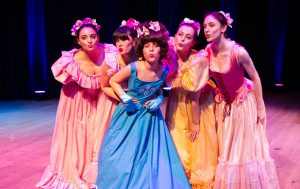 Jack is not your typical 11-year-old boy. His closet is jam-packed with dresses and tulle, his room is stacked with hats and wigs, and every surface is covered with makeup tins, face paint and books about goblins, witches, trolls and enchanted forests. Jack has high-functioning autism, and fairy tales and make-believe are a major part of the way he connects to the world. He is the subject of my short documentary, “Princess Jack,” exploring his special interest as he sews his first ballgown tailored for a debut at the royal ball.
Jack is not your typical 11-year-old boy. His closet is jam-packed with dresses and tulle, his room is stacked with hats and wigs, and every surface is covered with makeup tins, face paint and books about goblins, witches, trolls and enchanted forests. Jack has high-functioning autism, and fairy tales and make-believe are a major part of the way he connects to the world. He is the subject of my short documentary, “Princess Jack,” exploring his special interest as he sews his first ballgown tailored for a debut at the royal ball.
 Although many people these days complain about the selfishness of our youth, we read stories every day about children and teens going out of their way to help others. Such is this story out of Cedar Rapids, Iowa, where a high school cross country runner helped a runner from the other team cross the finish line.
Although many people these days complain about the selfishness of our youth, we read stories every day about children and teens going out of their way to help others. Such is this story out of Cedar Rapids, Iowa, where a high school cross country runner helped a runner from the other team cross the finish line.
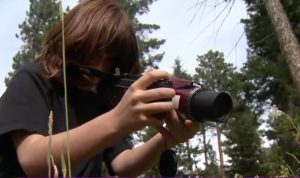 Adam Wolfers believes that autism has an impact on his son’s hobby. But he means a positive impact—not a negative one. Because his son Morgan’s hobby is photography, and he’s got quite an eye for it. “He has always noticed stuff that other people didn’t notice,” explained Adam.
Adam Wolfers believes that autism has an impact on his son’s hobby. But he means a positive impact—not a negative one. Because his son Morgan’s hobby is photography, and he’s got quite an eye for it. “He has always noticed stuff that other people didn’t notice,” explained Adam.
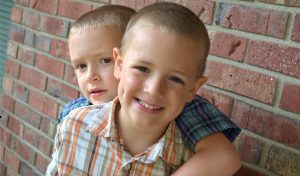 As I think back to the beginning of our life with autism, all I can say is that it has been one rollercoaster ride after another. I have fallen and gotten back up, time and time again. I’ve learned more than I ever thought would be possible from two little boys 30 years younger than me. It hasn’t been easy, but through strength and courage we continue to move on, each and every day. It’s really been what we have learned along the way that has gotten us to where we are today.
As I think back to the beginning of our life with autism, all I can say is that it has been one rollercoaster ride after another. I have fallen and gotten back up, time and time again. I’ve learned more than I ever thought would be possible from two little boys 30 years younger than me. It hasn’t been easy, but through strength and courage we continue to move on, each and every day. It’s really been what we have learned along the way that has gotten us to where we are today.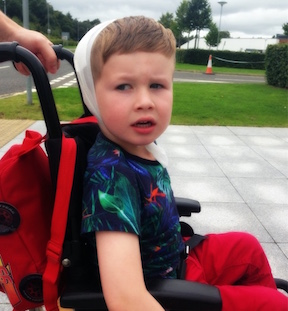
 A high pain threshold can be common when your child has autism or, in fact, any special need. And it can be both a blessing and a curse.
A high pain threshold can be common when your child has autism or, in fact, any special need. And it can be both a blessing and a curse.
 I think I speak for most parents of autistic children or children with autism when I say the biggest lesson I have learned is one involving friendship. (I’m never really sure how to word because both ways can, and have, upset parents in the Autism/Autistic Community. So I will use both.)
I think I speak for most parents of autistic children or children with autism when I say the biggest lesson I have learned is one involving friendship. (I’m never really sure how to word because both ways can, and have, upset parents in the Autism/Autistic Community. So I will use both.)
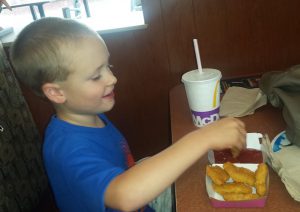 Food can be a very challenging part of your child’s ASD diagnosis. It is for one of my sons. He has a very limited menu and it continues to stay that way.
Food can be a very challenging part of your child’s ASD diagnosis. It is for one of my sons. He has a very limited menu and it continues to stay that way.